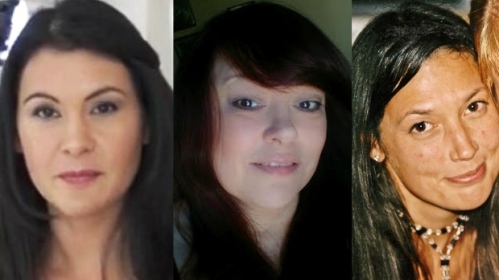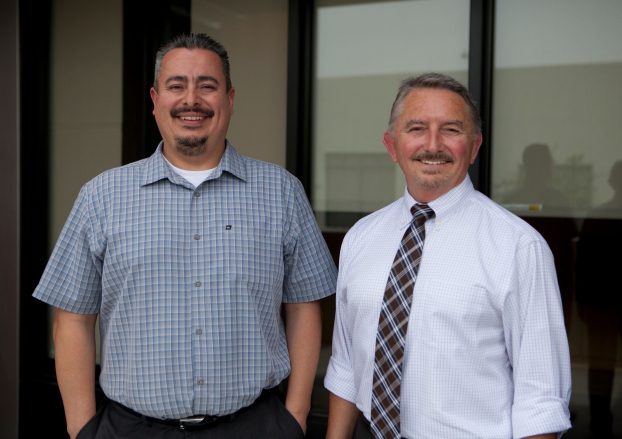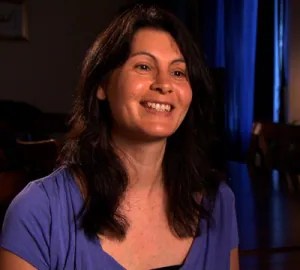 |
| Sonya
Murray, centre, made it her mission to track down her long-lost sisters
Nakuset, left, and Rose Mary, right. (Submitted by Nakuset) |
Women among thousands of First Nations children removed from their families under federal program
CBC News Posted: Jul 04, 2016 / Last Updated: Jul 05, 2016
Sonya Murray and her sister Nakuset hadn’t heard from their youngest sister Rose Mary since she was around five years old.
The two older sisters were taken from their family home in Thompson,
Man., one night as part of a federal government program that’s now known
as the Sixties Scoop.
Decades after being forced apart along with thousands of other First
Nations children and placed in adoptive homes across Canada, the
two sisters were reunited with Rose Mary Monday on CBC Montreal’s
Daybreak.
Between the 1960s and 1985, the government estimates more than 11,000
Aboriginal children were removed from their families – often without
the parents’ consent – and adopted out under the program.
Others contend that as many as 50,000 children were adopted out under the program.
“One night, there was a knock on the door. Nakuset and I were alone
in the house. I kind of opened door… and apparently some police came in
and took us away,” Sonya said.
Nakuset and Sonya were kept in the same foster home for a brief period before they were separated.
‘She’s gone… that’s all I ever heard’
Sonya, who was around five years old at the time, was the eldest of the three girls.
“One morning I woke up and I looked in the bed over from me and it was all made up, and [Nakuset] was gone,” she said.
“I asked, ‘Where’s my sister?’ and they just said, ‘She’s gone.’ That’s all I ever heard.”
Nakuset was adopted by a family in Montreal, where she still
lives, and Sonya was later returned to live with her mother and
stepfather. She now lives near Kenora, Ont.
The emotions of that time are still raw for Nakuset, especially when
she considers the loss Sonya felt and the effort she made to find her
little sisters.
“Sonya made it her mission to try to find both of us, and she’s really the one that keeps us all together.”
That effort paid off last week, when she received a message from Rose Mary on Facebook last week.
The youngest sister had moved to Vienna, Austria, with her European father when she was around three years old.
“There were no goodbyes,” Sonya said. “She was just gone one day.”
The sisters’ four brothers were also taken from their mother and placed in homes.
‘She was the last missing piece of the puzzle’
The message from Rose Mary, who now lives in Horn, Austria, came as a welcome shock to Sonya.
“I couldn’t believe it. I wasn’t sure. My head was asking if this is real,” Sonya told CBC.
Since then, the three say they’ve been going “crazy” together, and they finally feel complete.
“In Austria, I used to feel lost and I never knew why,” Rose Mary
said. “Now, my heart feels wide open and I’ve found new happiness.”
Rose Mary was “the missing piece,” Nakuset added, a feeling that was echoed by Sonya.
“You have a sense of emptiness, there’s always a feeling that you’re not full, you’re not complete,” she said.
“In meeting with my two sisters — now it’s ‘us’, not just me and you,
like it was with Nakuset. It’s not just me and you against the world,
it’s us against the world. We’re complete. She was the last missing
piece of the puzzle.”
Nakuset said she can’t imagine the loneliness her youngest sister felt so far away.
“I think about how hard that must have been for her to be the only
Cree in a country, you know, where there’s no one else who looks like
her,” she said.
Nakuset said they’re now keen to get to Europe and teach their little
little sister all about Cree culture and language. Rose Mary is already
planning a visit to Canada next summer.
“We’re trying to do everything we can to make up for lost time,” Nakuset said.
http://www.cbc.ca/news/canada/montreal/60s-scoop-reunited-sisters-cbc-1.3663770?cmp=abfb
Nakuset is one of the writers in the new book STOLEN GENERATIONS... PAPERBACK HERE:
https://www.createspace.com/5982643


























